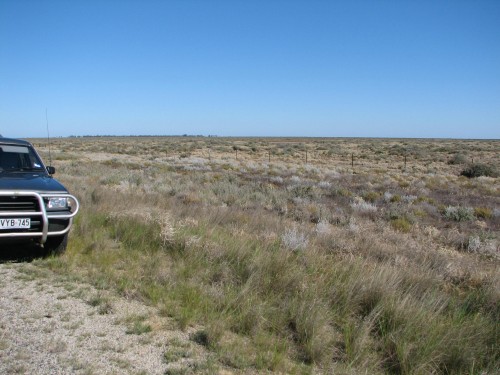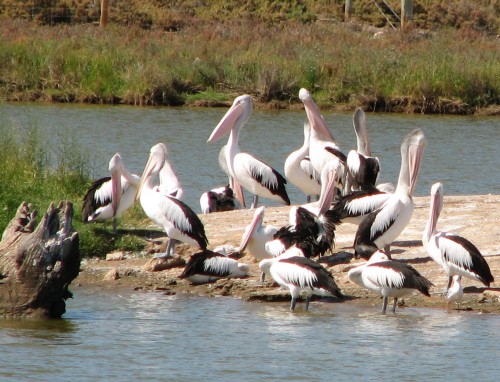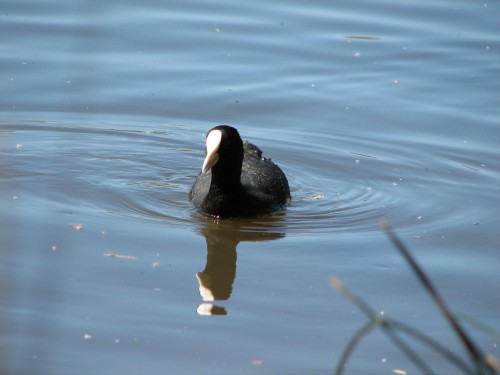Surprising waterbirds of the dry country
Dry Country
I love the dry country we have here in Australia. Most of my birding has been done in areas of Australia which have an average annual rainfall of under 250mm (10 inches). Some of this country is marginal farming country, sometimes cereals, and often sheep and cattle. I grew up on such a farm and still cherish my childhood adventures in the mallee bushland near my home.
On the road again
Earlier this week my wife and I travelled from our home in Murray Bridge, South Australia, to Sydney. We are currently staying with my son and his family. The grandchildren love having us stay with them. At ages 7 and 4 they are already showing an interest in the birds they see in their garden, and in the parks they visit. My interest has rubbed off on them.
Missing out
The car journey from home to Sydney is over 1300km, two long days of driving. In future, we think we might take three or four days to get here, stopping more frequently at the many interesting places along the way. There are many national parks, reserves, botanic gardens and bushland on this route and we just have to drive right on by, often with a groan of despair at what we might be missing.
Hay Plains
One of the places we drive through is the large rural town of Hay, located on the banks of the Murrumbidgee River. The birding along this river can be excellent. But before we get to Hay we have to pass through about 130 kilometres of the Hay Plains, a dry region consisting of few trees, much saltbush and some grassland. I find this drive to be fascinating because it often reveals odd collections of birds. On one trip we saw hundreds of Emus grazing on the low vegetation. On another trip, after heavy rain in that area, we saw thousands of ducks, mostly Australian Wood Duck and Grey Teal. They were taking advantage of the long stretches of water still lying along the edges of the highway.
Surprising Waterbirds
As we travelled along at 110kph my wife suddenly pointed out an interesting sight. It was a gathering of dozens of waterbirds: Australian Pelicans, White Ibis, Straw-necked Ibis and Yellow-billed Spoonbills. Harassing all of them from only several metres overhead was a Swamp Harrier. As we rushed by I didn’t have time to take in the presence of any other birds. I am sure that if we had had the time to stop, I would have recorded several species of ducks, perhaps coots, swamphens, egrets, herons and lapwings, cormorants, and maybe even some crakes and rails.
Irrigation
This was a very surprising collection of birds for what is essentially very dry country. The reason for their presence is explained by the presence of wide irrigation channels. The water is pumped from the nearby Murrumbidgee River into a series of channels, some of which are 5 or more metres wide. The water is then used to either flood irrigate large expanses of land, or pumped through long, overhead sprinkler systems. This area grows large amounts of hay, wheat and cotton, all irrigated from the channels. The fact that this also provides a perfect environment for numerous birds is a pleasant by-product. Further east there are large expanses of fruit orchards as well.
Further reading:
- Australian Pelicans overhead
- White Ibis at Dubbo Zoo
- Straw-necked Ibis Adelaide Zoo
- Yellow-billed Spoonbills and the birth of a birder
Fan-tailed cuckoo, Balranald
Sydney Trip June 2011
While having lunch on the banks of the Murrumbidgee River in Balranald last June, I saw a Fan-tailed Cuckoo quietly feeding in a nearby group of trees. I crept as close as I dared, trying not to scare it away. Eventually I was able to get this somewhat fuzzy photo – it’s not brilliant, but it’s the best of a bad lot. That’s what happens when one pushes one’s camera to it’s limit.
The Fan-tailed Cuckoo is a species I haven’t seen all that many times, so any any sighting is a good one. One day I shall also get a good photo.
Birds along the Murrumbidgee River, Balranald
Sydney Trip June 2011
On our journey home from visiting family in Sydney earlier this year we stopped for a lunch break at Balranald in far western NSW. After a few minutes in the local tourist information centre we drove down to the picnic area on the banks of the Murrumbidgee River (see photo below). While having lunch I made a modest list of birds seen and managed several interesting photos.
The Darter (shown above) was drying its wings after swimming in the river. This species is widespread along our waterways in Australia without being in large numbers anywhere. White-faced Herons, like the one shown below, are both widespread and common. This one looked like it wasn’t enjoying the cold weather. It seemed to be huddling up and trying to warm up in the weak sunshine.
Great Crested Grebe at Balranald
Sydney Trip June 2011
I written a number of times recently about our trip earlier this year to visit family in Sydney. On our way home we took a little extra time to stop off and do a little birding at key spots, usually lunch times or when we stopped to have a cuppa. Instead of taking only 2 days to come home we took an extra day. I’ll be sharing some of my sightings and photos of the birds seen in the coming days.
On the second day coming home we stopped at Balranald, NSW to have lunch. We drove down to the picnic area on the banks of the Murrumbidgee River (see photo above). One of the birds seen was a solitary Great Crested Grebe, shown in the photo below.
Australasian Grebes are very common on lakes, rivers and wetlands in Australia, as are Hoary Headed Grebes. Great Crested Grebes – in my experience – are nowhere near as common and therefore any sighting is exciting. They are also spectacular birds to see, especially during courtship displays. Sadly, this one was a long way away from my camera, and because I’ve not yet learned to walk on water, the resulting photo is way below my usually high standards. Sigh.
Never mind; one day I will capture a great photo of this great species.








